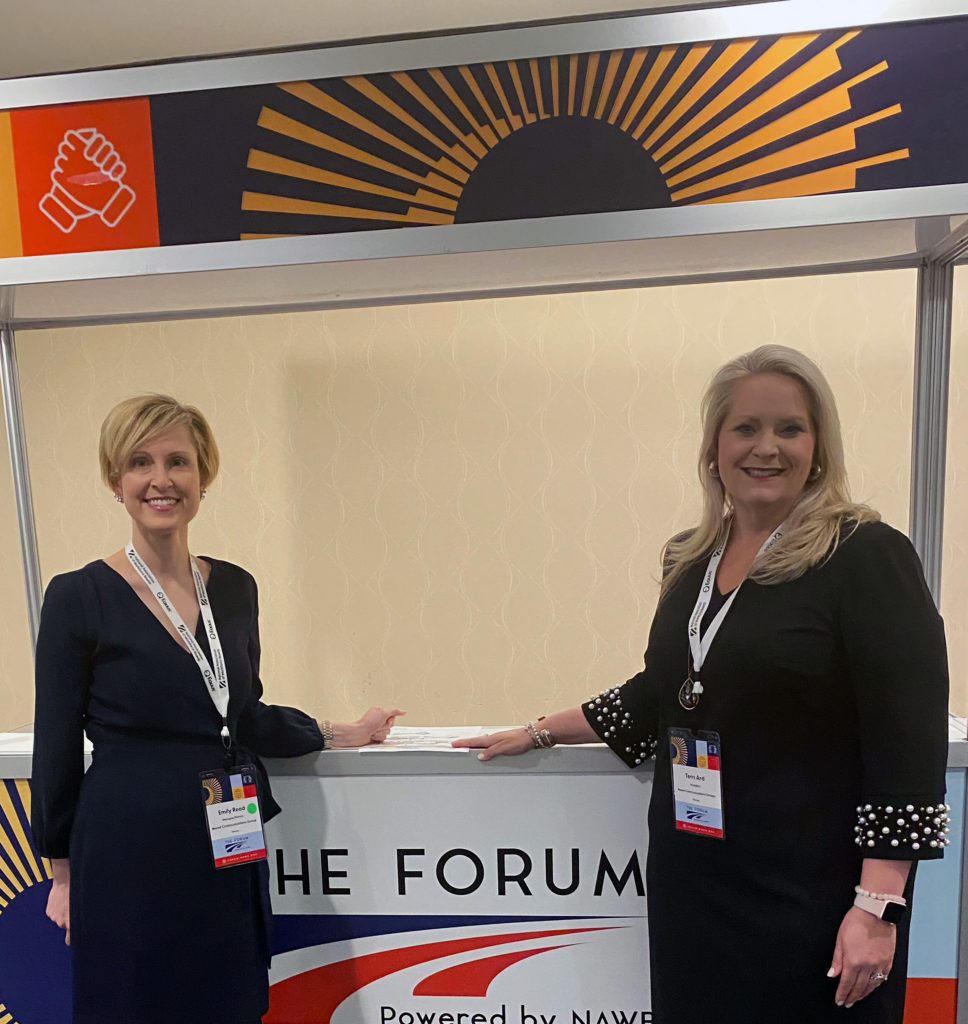Blog
Blog

Seize workforce opportunities for a robust pandemic recovery
Last week, I had the privilege of attending The Forum, the nation’s largest annual workforce development conference. It was a vital and vibrant gathering of workforce development and education entities who are feeling the pressure — and the potential — to connect employers with the talent they need amid post-pandemic challenges, including “The Great Resignation.”
Presented by Moore’s client the National Association of Workforce Boards, The Forum focused on equipping the workforce system with creative solutions amid this pivotal time of disruption. At our breakout session, Moore Managing Director Emily Read and I aimed to bring communications solutions into the conversation. Our “Are You Reaching Your Audience?” presentation was a standing-room-only crowd, which spoke volumes about the nationwide recognition of the need for stronger brand positioning and messaging that drives action.
What Moore said about the importance of messaging
We told attendees that your brand isn’t what you say it is; it’s what others say it is. Talking honestly with your audiences is an essential first step to understanding how your brand is perceived. Answering these five questions can help establish a baseline for where your brand is today:
- Do your current service offerings make sense in today’s climate?
- What is needed to stimulate demand for your services?
- How can you re-imagine and engage in new opportunities?
- Do your talent requirements need to change?
- How do the above findings impact your brand’s name, architecture or tagline?
We reiterated that the most strategic organization leaders understand that people base most buying decisions on trust, which organizations can build by seeking not just to meet but to constantly exceed customer expectations. They must aim to delight. They are not after one-time buyers or customers; they want lifelong relationships with loyal customers – individuals who trust, like and believe in their brand so much they’ll make numerous purchases or engagements and convince others to do the same.
It was purpose-filled work to share our insights with so many others who share our passion for providing synergy across the entire workforce development ecosystem. Moore’s dedicated workforce development and education practice area helps our clients guide individuals toward self-sufficiency, while keeping equity at the forefront.
What Moore heard about workforce trends
We also did a lot of listening at The Forum. Here are three things we heard loud and clear:
- There are more jobs open than people looking for jobs. This is not the first time this has happened, but this is the first time that economists don’t see an end in sight. According to the U.S. Bureau of Labor Statistics, 11.3 million jobs were open on the last day of February. But in March, the number of persons not in the labor force who currently want a job was only 5.7 million. The unemployment rate was only 3.6 percent — essentially the equivalent to February 2020, prior to the pandemic.
- Wages are rising but not after adjusting for inflation. Spending power is eroding. Will raising wages be enough to pull people back in the labor market? Workforce experts (and hurting businesses) will be watching.
Research by the Federal Reserve Bank of Atlanta found that Millennials’ labor force participation decisions are only about three-quarters as responsive to wage changes as Baby Boomers’, and Generation X’s participation decisions are only about half as responsive. Employers will have to get creative and offer both wage and non-wage incentives to fill their open jobs. - The remote work that was highly irregular two years ago is here to stay. According to research presented at The Forum, 54 percent of unemployed survey respondents said they are exclusively considering or would prefer jobs allowing them to work from home. This has implications for all employers but especially for industries that require in-person employees, such as the hospitality, brick-and-mortar retail and skilled trades sectors.
What must come next for us all
Solving these problems will require innovative approaches, such as those initiated by the Governor of the U.S. Virgin Islands. He told conference attendees that the island’s leadership, recognizing it simply can’t afford for people to be poor, is committed to advancing the workforce. Their philosophy is it is better to spend $10,000 for advanced education than $50,000 to incarcerate them. Therefore, they see that every person gets an education where students are encouraged to identify aspirational goals and set a clear vision to achieve them.
Other communities across the United States will need to craft and execute their own customized visions in order to meet the demands and needs of our modern workforce. This is both our challenge and our opportunity, and it’s one that will be better achieved if workforce boards and education partners can effectively communicate the value proposition of increasing the strong talent pipeline, how it will benefit the economy and their role in bringing it to fruition.
 Emily Read (left) and Terrie Ard (right) at The Forum
Emily Read (left) and Terrie Ard (right) at The Forum

